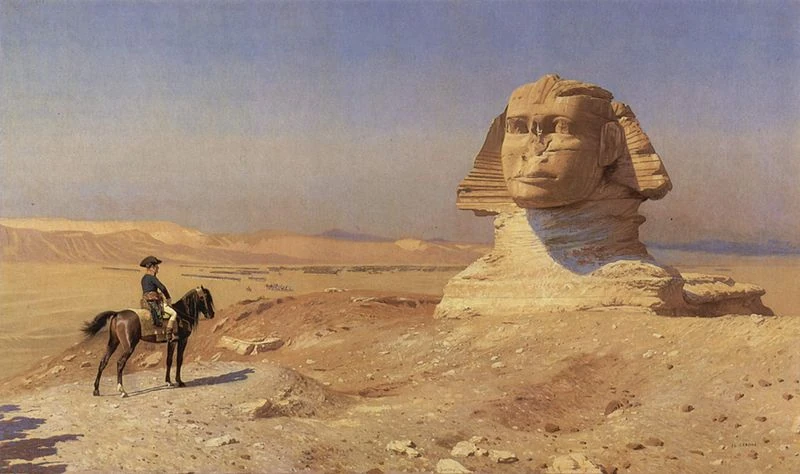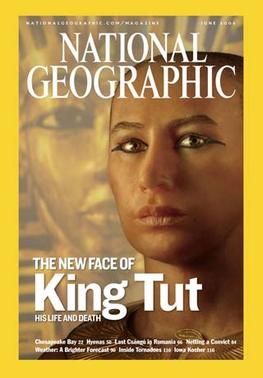The selfish nature of history
One of the central concepts of history is that it is always written to serve a purpose. Whether that be for political gain, religious motivation or for legitimising material wealth. There is no more poignant example for this quality than is the racially motivated suppression of Africa’s role in world history. The view that Africa is a barbarous 'land of darkness' is a view held by
Oxford professors of History as late as the 1960s, and still very much alive today. In a lecture in 1831, the otherwise great philosopher Hegel stated that Africa
was of no significance to the course of world history until it was colonised by
Europeans. Hugh Trevor-Roper, Professor
of History of Modern History at the University of Oxford, echoed this view in
1963, despite the indisputable evidence of the significant role the continent
has played in shaping Human History. Of
all the numerous African empires and innovations, this
sinister prejudice is best displayed by Ancient Egypt. Ancient
Egypt was an African state, its location is African, inhabitants were African
and much of its affairs were with other African civilisations. Academics holding discriminatory views against
Africans such as Hegel did not discredit the Ancient Egyptians, but believed
that it was not an African civilisation, and that its people were European in
origin and appearance.
| Black Ancient Egyptians |
This
view is not only false, but is intentionally racist. The root of this perception is the Napoleonic
expedition to Egypt in the 17th century, at the height of transatlantic
slavery. The French invasion force
rediscovered the ruins of Egyptian civilisation. This immediately caused problems as the
economy of Napoleonic France was based on racialised slavery, which was
justified by the pseudo-scientific concept that the 'negro race' was inherently
inferior to Caucasians. The discovery of
the Pyramids and other structures showed that ancient North Eastern African
civilisation was far superior to that of Europe's at the time, where most lived
in squalor. Imagery and statues clearly
showed that they were built by people regarded by the French as 'Negros', a
people considered as unintelligent and uncivilised. This huge discovery directly challenged
'negro' inferiority, and therefore slavery and the French economy itself.
French
academics reacted to the discovery in very different ways; some intellectuals
recorded the discovery without obscuring the facts with racist bias. Professor
Amelineau, an Egyptologist who translated and published Coptic texts stated;
'Egyptian civilisation is not aesiatic but African in origin, of negro origin,
however paradoxical this may seem. We
are not accustomed to endow black or related races with too much
intelligence'. Although Amileau felt
inclined to racially abuse the Ancient Egyptians, he acknowledged their
ethnicity. His understanding came
directly from previously untranslated texts and from the unexcavated tombs of
the First Dynasty Pharaohs. Amelineau's
claim corresponded with the firsthand accounts of Greek historians. For example, Herodotus, the father of
history, visited Egypt around 450BC, during the 27th Dynasty. In the Second volume of Histories , he
frequently notes the appearance of the native Egyptians he encountered on his
voyage down the Nile, for example he states that the Egyptians were 'black with
heat' and he was able to identify an Egyptian Oracle because she was
'black'. When referring to the
Colchians, people living in Southern Russia, believed to be of Egyptian descent,
Herodotus was able to affirm the Egyptian belief that the Colchians were
descended from the Army of Sesosrris; 'As for me, I judge the Colchians to be a
colony of the Egyptians because, like them, they are black with wooly hair'.
 |
| Napoleon Bonaparte before the Sphinx |
However,
many of the 167 French academics on the expedition held a belief in racial
higherachy; a 'negroid' civilisation can not be highly advanced because members
of the 'negroid' race were inferior to those of the 'Caucasoid' race. They
could not dispute the intricacy and advancement of Egyptian civilisation, but
due to their belief in racial higherachy, the only possible explanation was
that Egypt was of European origin, and that it could not be African because the
'negroid' race were incapable of such incredible feats of engineering as the
Pyramids. This viewpoint has obscured
the truth of Ancient Egypt, as the Napoleonic scholars Europeanised the Ancient
Egyptians, inventing their ethnicity based on the false notion of ethnic
superiority. They therefore believed that
the Ancient Egyptians were Hamites, an invented 'race', determined by
unsystematic features, that do not suffice to characterise a race of people,
such as thin noses or straight hair.
These were believed to be inherited from Europeans, subsequently placing
them above 'Negros' on the invented Pyramid of the races. Scholars credited 'Hamites' with all evidence
of African civilisation.
In
addition to the eyewitness accounts of Greek historians, the concept of a
European Egypt was challenged by artefacts in which the Ancient Egyptians
depicted themselves as Africans. This is
one possible explanation of the mysterious missing noses of Egyptian statues;
to give more credibility to a European Egypt, early Egyptologists defaced
sculptures to hide the damming African characteristics that they
displayed. However, Intact statues of
Pharaohs such as Narmer, founder of the First Dynasty and Djoser, builder of
the Step Pyramid clearly show a 'negro' complexion. Furthermore, tomb paintings show that the
Egyptians were unconfused about their own ethnicity. One such example is the 'Portrait of the
Races', a painting found in the tomb of Rameses II. This artwork shows how the
Egyptians saw themselves. The artwork
depicts four races; Europeans, Semites (people from the Middle East), Egyptians
and Nubians. As well as clearly
distinguishing Egyptians from Europeans, it portrays Egyptians in the same
likeness as the Nubians, who are widely accepted as being a 'negro'
civilisation, with the only difference being their clothing.
 |
| Portrait of the Races |
In
spite of all this evidence, early Egyptologists dismissed claims of a black
Egypt. For example, Francois
Champillion, translator of the Rosetta Stone, comments on Volney's (a scholar
and author of The Ruins of Empires) assertion; 'He (Volney) concludes that the
Ancient Egyptians were true 'Negros' of the same species of all indigenous
Africans - To support his opinion, Volney invokes that of Herodotus, who
apropos the Colchians recalls that the Egyptians had black skin and wooly hair. Yet these two physical qualities alone do not
suffice to characterise the negro race and Volney's conclusion as to the Negro
origin of the Ancient Egyptians is evidently forced and inadmissible'. This statement aptly demonstrates the
contradictory nature of the 'evidence' for a Caucasian Egypt; according to
pseudo-science, 'black skin and wooly hair' defined the 'negro race', marked an
individual as fundamentally inferior and condemned them to a lifetime of
slavery. I can not cite a more
paradoxical and poignant example of the discerning nature of history, which is
entirely derived from historians.
Even
today, Egypt is depicted as a European civilisation. For example, a scientific reconstruction of Tutankhamun’s
skull carried out by National Geographic in 2015 caused controversy as it
depicted the Pharaoh as an Anglo Saxon.
A second reconstruction on the same skull conducted by British
scientists yielded a 'negroid' complexion.
Although CT data can reconstruct the shape of Tutankhamun's skull to a
high degree of accuracy, it gives no indication to characteristics such as skin
tone and hair colour, therefore the artist selected a shade based on 'an
average shade of modern Egyptians'. The
inaccuracy of this decision cannot be overstated; the modern Egyptians do not represent
the Ancient Egyptians as intermarriage between different ethnic groups after
immigration and various invasions considerably altered the appearance of the
Egyptians. The artist chose to ignore
copious amounts of paintings and carvings from Tutankhamun’s own time; these
images depicted the King in two colours: bright red (In Ancient Egyptian and
Nubian art, A symbolic colour to represent men) or jet black. Based on all available evidence, the artist
should not take the complexion of modern Egyptians into account, but simply
decide whether Tutankhamun was bright red or jet black. Although this may seem an insignificant
error, National Geographic's esteemed reputation and wide audience means that
the eurocentrism in Egyptology, stemming directly from the racist conquers of Egypt is reinforced in the modern era, therefore diminishing our
acknowledgement of the scope of Africa's contribution to the human story.

Comments
Post a Comment